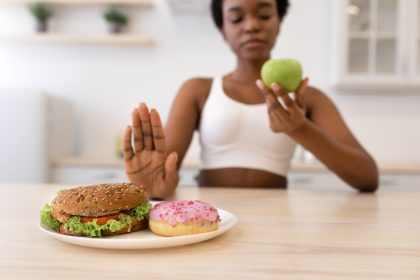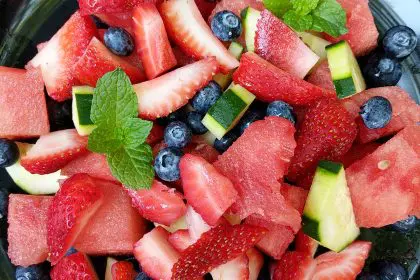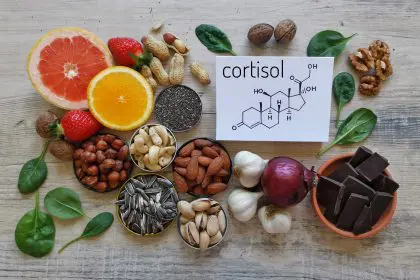Living with diabetes requires thoughtful food choices, particularly when it comes to nature’s candy – fruit. While sugar content often raises red flags, certain fruits offer substantial health benefits when consumed strategically. Here’s a numbered breakdown of five fruits that deserve a place in your meal plan, along with expert-backed strategies for enjoying them.
1. Making the most of grapes’ benefits
These small spheres of sweetness often face scrutiny for their sugar content, yet they pack a remarkable punch of heart-supporting polyphenols. With a glycemic index of 53, grapes fall into the moderate category for blood sugar impact. A measured portion provides essential vitamin C, potassium, and fiber – nutrients crucial for maintaining overall wellness.
Consider enjoying grapes alongside protein sources like cheese or almonds, which helps moderate their effect on blood glucose levels. The fiber content works as a natural brake pedal, slowing sugar absorption and preventing unwanted spikes.
2. Bananas: Understanding the ripeness factor
Many people believe bananas are off-limits for those managing diabetes, but timing and selection make all the difference. These portable powerhouses deliver essential potassium and vitamin B6, supporting proper nerve and muscle function.
The secret lies in choosing slightly green bananas, which contain higher amounts of resistant starch. This specialized carbohydrate resists quick breakdown in your system, resulting in a gentler blood sugar response. Pair your banana with a protein source for an even more balanced effect on your glucose levels.
3. Mangoes: The misunderstood tropical treasure
Despite their reputation for sweetness, mangoes offer more than just sugar. Rich in vitamins A and C, these tropical fruits support immune function while providing a surprisingly reasonable glycemic load when portion size is considered.
Timing plays a crucial role in mango consumption. Including this fruit as part of a balanced meal containing lean protein or healthy fats helps moderate its sugar impact. Avoid eating mango on its own to prevent rapid blood sugar changes.
4. Cherries: Nature’s blood sugar friend
Don’t let their sweet taste fool you – cherries boast a notably low glycemic index of 22, making them an excellent choice for blood sugar management. Their deep red color signals the presence of anthocyanins, antioxidants that may help improve insulin response.
Fresh or frozen cherries make ideal choices over their dried or canned counterparts, which often contain added sugars. Try adding them to plain yogurt or overnight oats for a naturally sweet breakfast that won’t send your glucose levels soaring.
5. Pineapple: The strategic tropical choice
While its sweetness might raise eyebrows, pineapple delivers valuable nutrients including vitamin C and manganese. It also contains bromelain, an enzyme that aids digestion and may help reduce inflammation throughout the body.
The key to enjoying pineapple lies in thoughtful portion control and strategic pairing. A few fresh slices combined with protein-rich cottage cheese or Greek yogurt can satisfy your sweet tooth while maintaining stable blood sugar levels.
Creating your fruit strategy
Success with fruit consumption while managing diabetes comes down to three main factors: timing, pairing, and portion control. Consider these practical approaches for incorporating fruits into your daily routine:
Morning consumption tends to work best for many people, as insulin sensitivity is often higher earlier in the day. Always choose whole fruits over juices to benefit from the natural fiber content that helps moderate sugar absorption.
Keep portions reasonable – a small handful of grapes, half a banana, or a few chunks of pineapple often provide enough sweetness to satisfy cravings without overwhelming your system. Pairing fruits with proteins or healthy fats creates a more balanced snack that supports steady blood sugar levels.
Measuring success
Monitor your blood glucose response to different fruits and combinations to understand what works best for your body. Keep a food diary noting not just what you eat, but when and how you feel afterward. This information proves invaluable in creating your personalized approach to fruit consumption.
Remember that hydration plays a crucial role in blood sugar management. Drinking water before and after enjoying fruit helps your body process natural sugars more effectively.
Building sustainable habits
Long-term success with diabetes management doesn’t require eliminating fruits from your diet. Instead, focus on building sustainable habits around fruit consumption that align with your health goals. This might mean adjusting portion sizes, trying new fruit and protein combinations, or changing the timing of your fruit intake.
Consider preparing fruit portions in advance, making it easier to grab appropriate amounts when hunger strikes. Store cut fruit in single-serving containers, making it simpler to control portions while ensuring you always have healthy options available.











